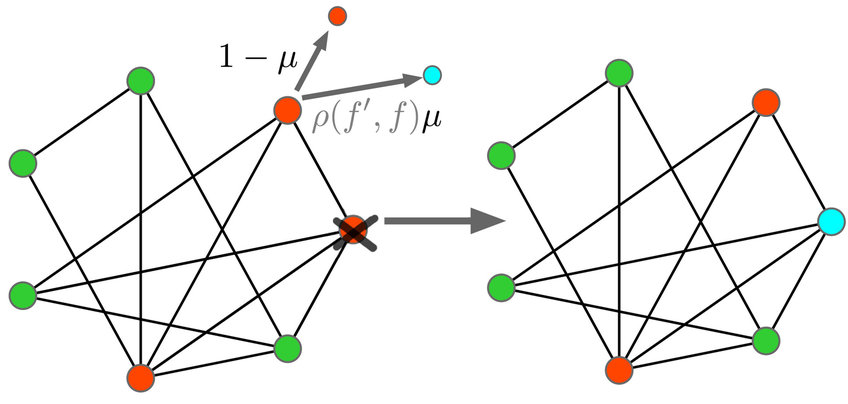Which Population Structures Maximize Evolutionary Fitness?
Detrimental mutants are important for long-term evolutionary dynamics
Scientists at the Max Planck Institute in Plön have shown that population structures that enhance the effect of selection do not necessarily also lead to higher fitness. Instead, it is crucial for maximizing fitness that detrimental mutations are prevented from becoming established.

Evolutionary graph theory - a branch of theoretical biology - investigates how population structure can influence the probability that a mutant will take over ("fix") a population and how long this typically takes. In the past, the case of a single, mutated individual was always considered. In continuously evolving systems, however, new mutations occur all the time. Typically, however, these do not occur anywhere, but rather increasingly where individuals reproduce. In the long term, such models then assume a state of equilibrium in which fitness no longer changes on average.
Intuitively, it has been assumed so far that selection enhancers increase the average fitness of the population in this equilibrium and selection suppressors decrease the average fitness of the population in this equilibrium. However, Nikhil Sharma and Arne Traulsen from the Department of Evolutionary Theory at the Max Planck Institute for Evolutionary Biology in Plön, Germany, were able to show that another group of graphs, the so-called suppressors of fixation, can achieve the highest mean fitness of the population. The main reason for this is their ability to efficiently prevent detrimental mutants from fixing. "This highlights the importance of detrimental mutants for long-term evolutionary dynamics, which has been overlooked in the literature," says Nikhil Sharma.
The influence of spatial structure
Spatial structure can significantly influence evolutionary dynamics. But traditionally, this has looked at regular population structures, which have no influence on fixation probabilities. In recent years, however, non-regular structures have been found to have very complex influences on fixation probabilities and times. Normally, these dynamics are studied by looking at the fixation process of a single mutation at a randomly chosen locus, allowing us to classify structures that amplify the effect of selection.
The new model shows that the fixation process of single mutations into long-term evolutionary dynamics is characterized by a balance between mutation, selection and random processes. The aim of such abstract models is to understand the role of population structure on evolutionary processes. Theoretically, biotechnology could exploit such structures to make systems robust against mutations or to select advantageous mutations.
